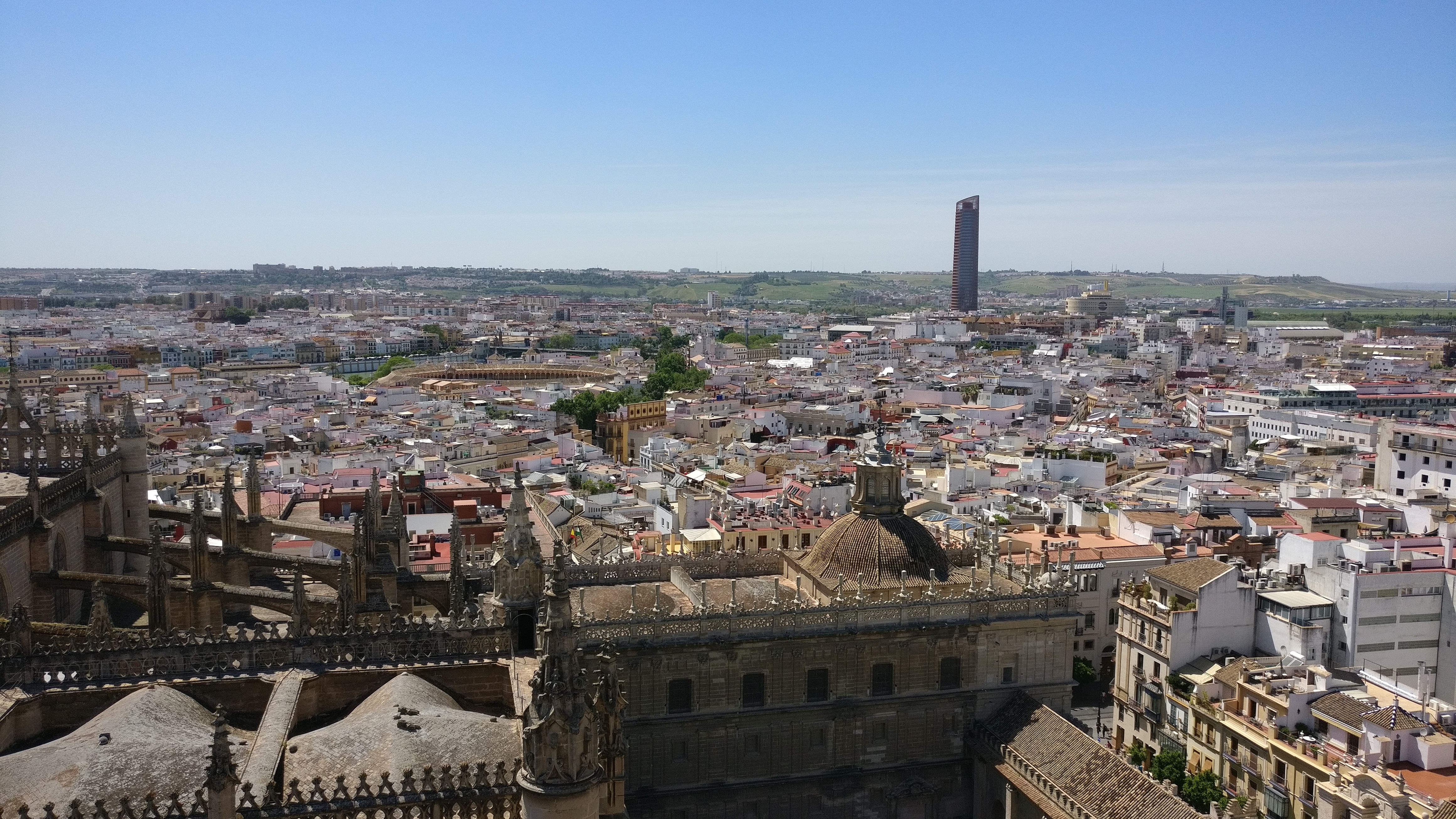
If you are like most people, you will travel to Seville from spring to summer. We have discovered why: beautiful weather, amazing tapas and historic building. That's the marketing. What is it really like?

Between March and November the average temperature in Seville rises above 20°C. (Read: there are only 3 months in the year the AVERAGE temperature is below 20°C.) No wonder that so many people come here to enjoy the sun. And leaving looking like lobsters.
If you are not used to warm weather like this, don't worry. The reason Spanish people look so comfortable in the heat is because they have done everything to make life more easy. This is how the stereotypical siësta began. Although Spanish people will proudly say they have a siësta to allow for an easy digestion of a kingsize lunch, that is not the entire truth. Imagine working in an office with glass walls and no airco in the scourcing sun. It would take a lot out from you, and focussing would be hard. That's the practical truth behind the siësta. People just work later, when it's easier to work.
Some plazas (squares) are made out of marble, or little stones - like Plaza de España. This is another trick to keep everything cool. Marble doesn't heat up well, it keeps its cool. This makes it nice to walk on.
If you have ever been to Santa Cruz, a barrio (neighbourhood) known for its small streets and mosaic tiles, or visited there on the Daily Bike Tour, you might have wondered why the streets there are so narrow. Simple answer: it's cooler. High houses and small streets stop the sunlight of reaching the ground. So it's always nice and cool in those streets.
You have probably had 3 weeks of beautiful weather. If you booked a week to Seville, and it starts raining when you arrive. Chances are: you are going to have amazing blue skies starting noon day 2.

You might think your vacation is ruined when it rains, but here rain is like turning the good weather hourglass. It doesn't take long (unlike Belgium and the Netherlands), and when it stops, your trip will as amazing as you've pictured it. Our recommendation for when it rains: try the local cuisine, go shopping, visit a museum or buy an umbrella and discover the city in the rain.
What most people don't realize is that rain is better than so hot weather that you start sweating the moment you get out the house/hotel. In all fairness, those are the only 'bad' options, which don't happen that often.
 For the most part, it is always sunny in Seville. The clear blue skies, the sunshine aren't part of a marketing scheme to get you to come here. It's (nearly) always like that here.
For the most part, it is always sunny in Seville. The clear blue skies, the sunshine aren't part of a marketing scheme to get you to come here. It's (nearly) always like that here.
Don't forget to apply sunscreen. The locals can pick tourists out of a crowd because they are sunburnt. The average (white) person can get burned from walking unprotected in the sun with a UV index of 5 in less than half an hour.
This graph shows the average UV index in a year. Getting a UV index of 6 and higher is not uncommon in Seville. That's why we advice taking, or buying sunscreen with you. Please be careful and share this with somebody who you want to take to Seville.